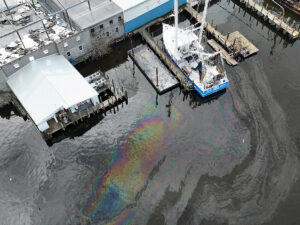News
One year later: Riverkeepers continue to track spill
CAFOs, Neuse River Watershed, Sound Rivers, Water Quality
Posted on May 24th, 2023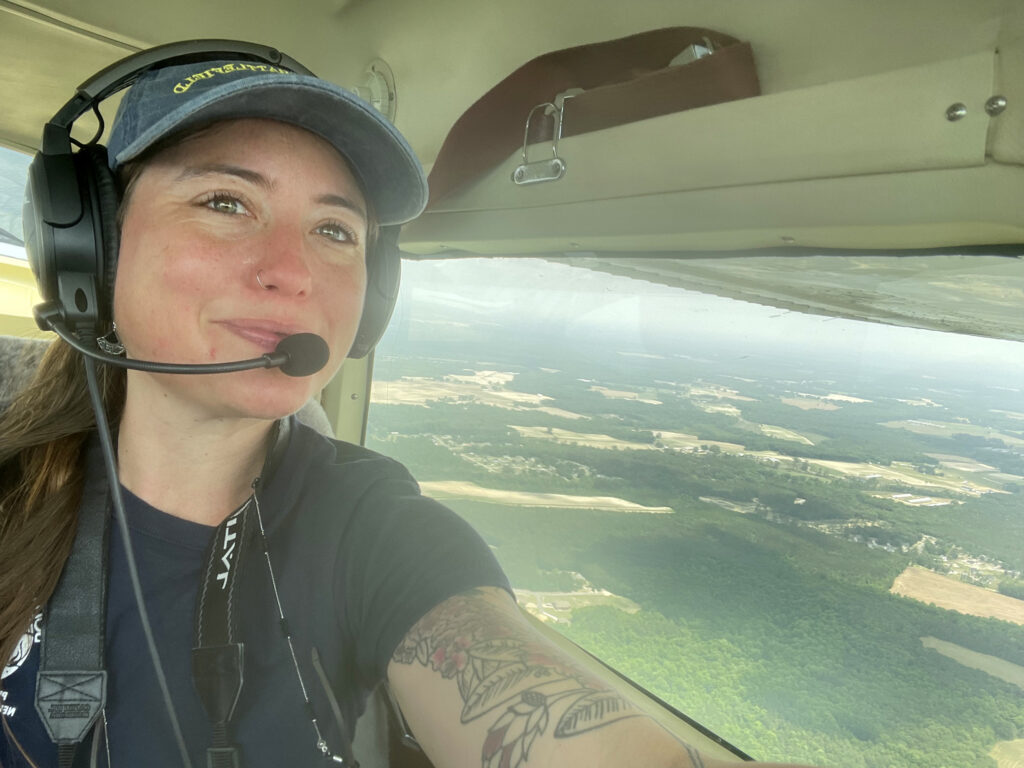
Samantha Krop takes to the air to take a look at White Oak Farm a year after its major hog-waste spill.
A year after a major hog waste spill in Wayne County, Sound Rivers’ Riverkeepers are still in the dark as to how the North Carolina Department of Environmental Quality is investigating the disaster.
“It’s extremely frustrating, demoralizing and invalidating to the public, who has a right to know about pollution issues of this caliber, and it’s unfortunate we have laws that have essentially created a black box that information about them is locked into,” said Neuse Riverkeeper Samantha Krop.
The spill happened over Memorial Day weekend of 2022, but it wasn’t made public other than a small, legal notice printed in a local paper, until Sam observed the telltale signs of major clean-up during a routine surveillance flight in August. Immediately, Sam and Pamlico-Tar Riverkeeper Jill Howell made a public records request from NCDEQ, but nine months later, have yet to receive a single document from the agency.
Taking matters into their own hands, Sam and Jill made two trips into Nahunta Swamp, adjacent to the White Oak Farm/Legacy Biogas facility where an estimated 3 million cubic feet of foam oozed from beneath a ruptured biogas cover. Some of the foam — comprised of decomposing hog waste, hog carcasses, expired Smithfield deli meats and hot dogs — spilled into the swamp. In both December 2022 and March 2023, their test results for surface water sampled at the site and downstream of the site revealed concerning levels of nitrogen, fecal coliform and E. coli bacteria. On both occasions, those levels were all normal upstream of White Oak Farms, pointing to ongoing pollution source stemming from the facility, though NCDEQ staff said the spill was contained and cleaned up.
“Here we are, a year later, and we have no resolution, and we know there’s an ongoing issue with pollution in the water,” Sam said.
While Sound Rivers informed NCDEQ authorities about the ongoing pollution of Nahunta Swamp in letters written in December and March, the only response they’ve received is a confirmation in March that NCDEQ had received the letter and opened an investigation. Because of a North Carolina law, any time NCDEQ opens an investigation into a CAFO (concentrated animal feeding operation), the agency is prohibited from revealing any information to the public, until and unless a violation is issued.
“We’re in a stalemate where there is an open DEQ investigation dragging on, and while it’s open, we get absolutely no information about the investigation,” Sam said.
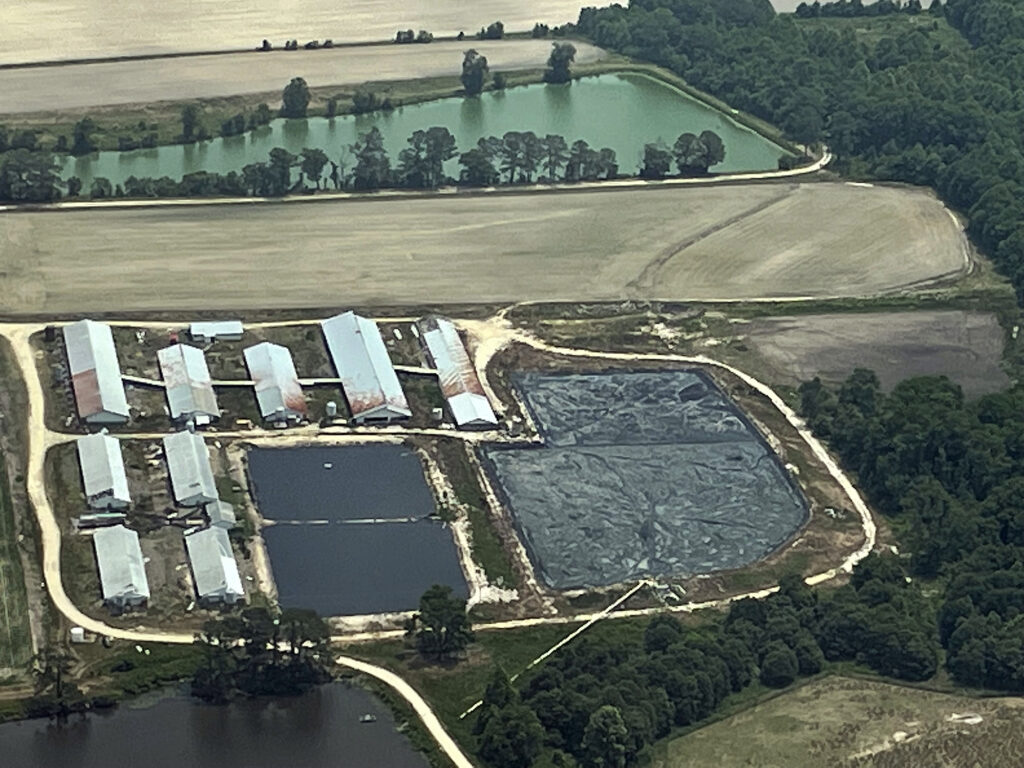
In December, NCDEQ issued White Oak Farms a $34,520 fine for the initial spill and other violations, but the owners have since challenged it.
“They had compliance issues before — several past NOVs (notices of violation) and with each NOV there were numerous parts,” Sam said. “Meanwhile White Oak Farm has challenged the civil penalty, has refused to comply; they have not taken the measures they were asked to take in ground- and surface-water sampling and reporting. They’re still not in compliance.”
Meanwhile, based on Sam’s flyover this week, there the facility doesn’t appear to be in operation.
“It’s totally abandoned — there’s no one there; there’s nothing going on there,” she said. “But the pollution issue isn’t visible, so we’ll have to keep going into the swamp to sample. And we’ll continue to wait for DEQ to get us our public records and address the ongoing pollution issue that we’ve discovered.”
Sam and Sound Rivers would like to thank SouthWings for arranging a volunteer pilot to fly Sam over the White Oak facility, Busco Beach ATV Park the coal ash pond at Duke’s H.F. Lee facility and several other CAFOs in the Neuse River floodplain — all of which have polluted, or have the propensity to pollute, the main stem of the Neuse River. SouthWings approaches conservation through aviation, giving partners the opportunity to get an aerial perspective to better understand and solve pressing environmental issues in the Southeast.
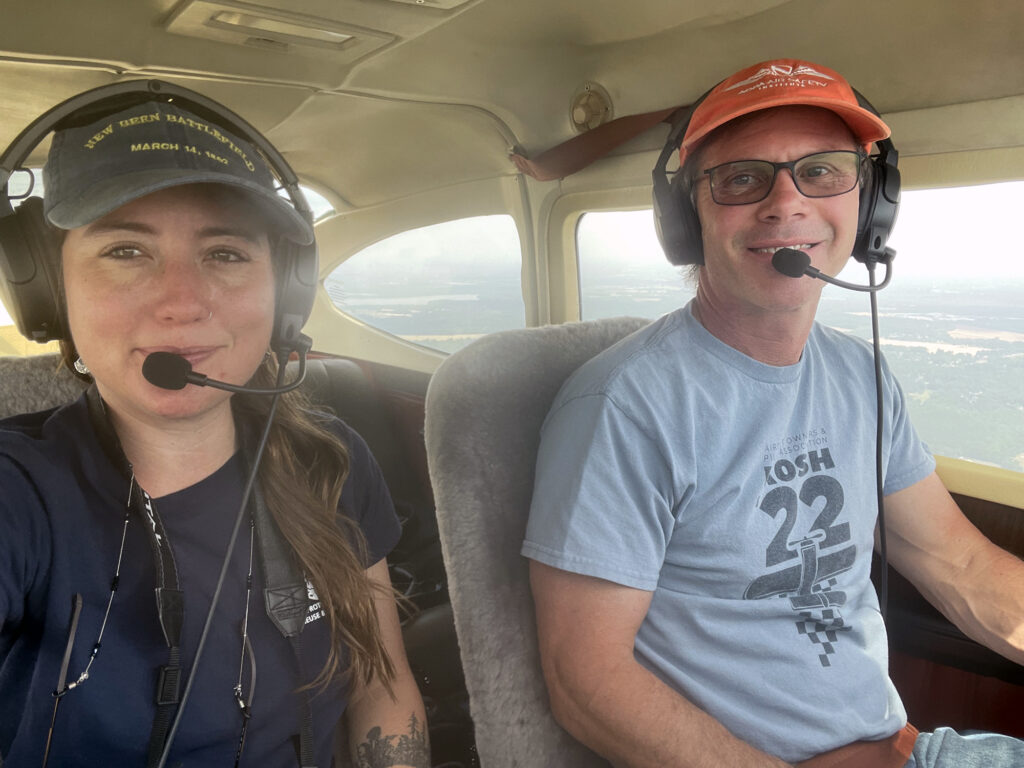
Related News
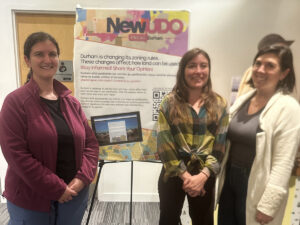
Durham community turns out for development ordinance update
November 21st 2024

Oyster Roast 2024 a smashing success
November 21st 2024

Riverkeeper, specialist get closer to Slocum Creek pollution resolution
November 21st 2024
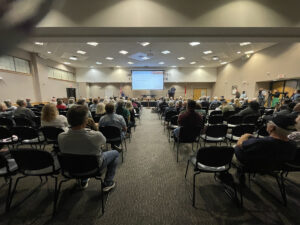
Press conference, public hearing draws a crowd
November 21st 2024
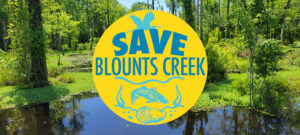
Sound Rivers to host press conference before Blounts Creek public hearing
November 14th 2024
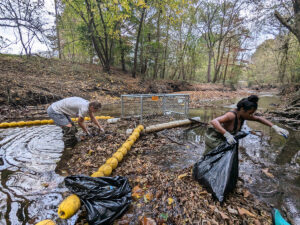
Honors college wraps up trash trap adoption
November 14th 2024
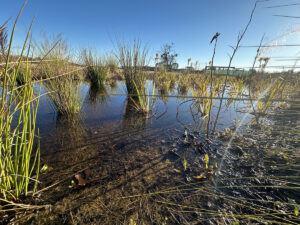
Stormwater education takes off
November 14th 2024

Sound Rivers shares mission, programs at science festival
November 14th 2024
